While there are actually many excellent options in the Bradenton area, I’ll start this week’s review with a few that I’ve had the pleasure of visiting in person.
Demi’s Noodle House
Chef and owner Demi Vangen is originally from Vietnam and believes that time around the table with family or friends is important, as it offers an opportunity to enjoy a good meal and take a break from our busy daily schedules.
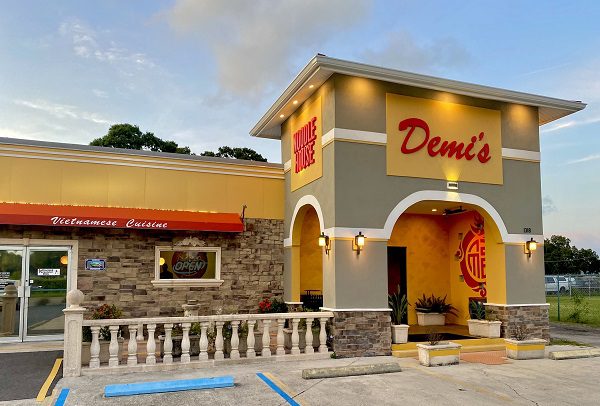
Their homemade broths are essential to the meal and follow a family recipe that cooks slowly since the morning and offers complex flavors.
Demi’s menu features rice noodles, ramen (soba or wheat), egg noodles, and vermicelli noodles in many delicious combinations. Rice noodles are served with several combinations of their soups. These include Beef Noodles Pho, Spicy Lemongrass Pho, Sweet and Sour Pho, and Chicken Noodle Pho. Each of these soups can be selected with flank steak, rare steak, chicken, tofu, vegetables, meatball or shrimp.
Ramen Noodle Pho is served with wheat noodles and hard-boiled egg, cilantro, and onion. The ramen is offered in two ways, Tonkotsu or Nippon Broth (made with pork bones) and Classic.
Demi’s Noodle House is run by Chef Demi’s family and offers the great flavors of time-tested recipes that have been perfected through generations. They’re located at 1318 10th St W in Palmetto and are open Monday through Friday from 11 am to 3 pm and 5 pm – 8 pm, and Saturday from 12 pm to 3 pm and 5 pm – 9 pm (Closed on Sundays).

Steak Pho
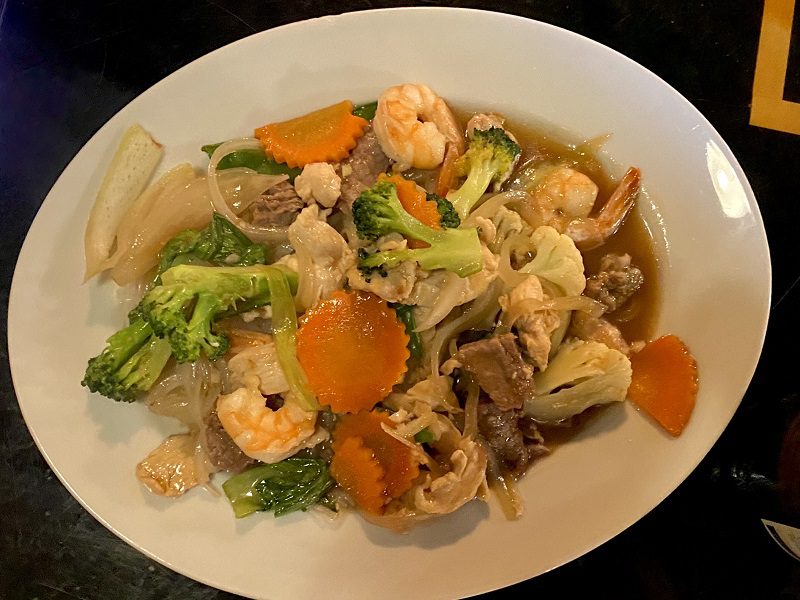

Mitaka Japanese Ramen House
Mitaka opened in 2018 and is owned by the husband and wife team of Mei Wang and Wei Ren. The pair created their menu with the objective of bringing us the authentic taste of Tokyo.
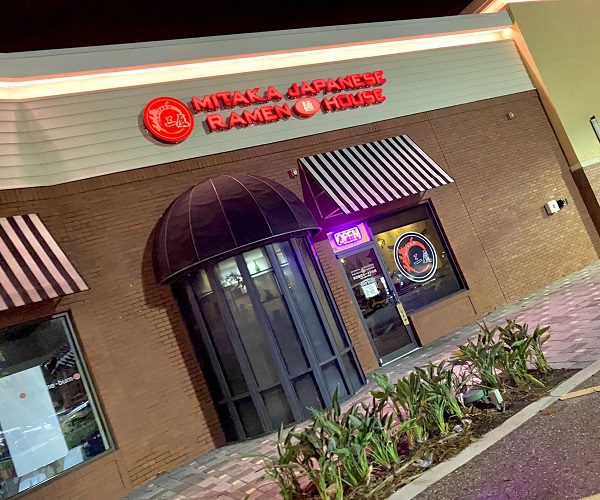
This restaurant and owner’s team also hold an interesting history. Chef Wei Ren worked as a sushi chef before setting off to attend the Miyajima Ramen School in Osaka. He’s one of only 400 chefs that have trained under Chef Rikisai Miyajima, who – among many other accomplishments – has established many Michelin-star and well-known ramen houses around the world.
Now to the restaurant itself, it’s a busy, busy place for very good reason. The menu concentrates on ramen noodles, which are typically wheat-based. The combinations of this traditional noodle preparation are endless. There are five types of ramen that are best known today. They consist of Tonkotsu, Shōyu, Shio, Karē, and Miso. They each offer their unique characteristics and Mitaka offers them with some of their own interpretations.
The Tantanmen is a spicy miso base and chicken broth with spicy minced pork, bean sprouts, bamboo shoots, wood ear mushrooms, egg, cilantro, scallion, and seaweed. The Tori Paitan is a shio base and chicken broth with chicken, bamboo shoots, wood ear mushrooms, egg, narutomaki (cured fish), scallions, and seaweed. There are at least six other ramen combinations to choose from.
One thing that caught my attention at Mitaka was the delicious appetizer selection. We had Edamame and Shumai. The Shumai is a new favorite for me. It’s a thin dumpling filled with shrimp and lightly fried or steamed. It’s bite-sized and flavorful. Other selections include the Rice Bowls, of which the Gyudon is a great option. It’s thinly sliced fatty beef with onions, broccoli, and rice. All these dishes go well with sake and they offer a great selection. All in all, this is a fantastic ramen house.
Mitaka Japanese Ramen House is located at 6749 Manatee Ave W. in Bradenton. They’re open Sunday from 12 pm to 9 pm and Monday through Saturday from 11 am to 9 pm (closed on Tuesdays).
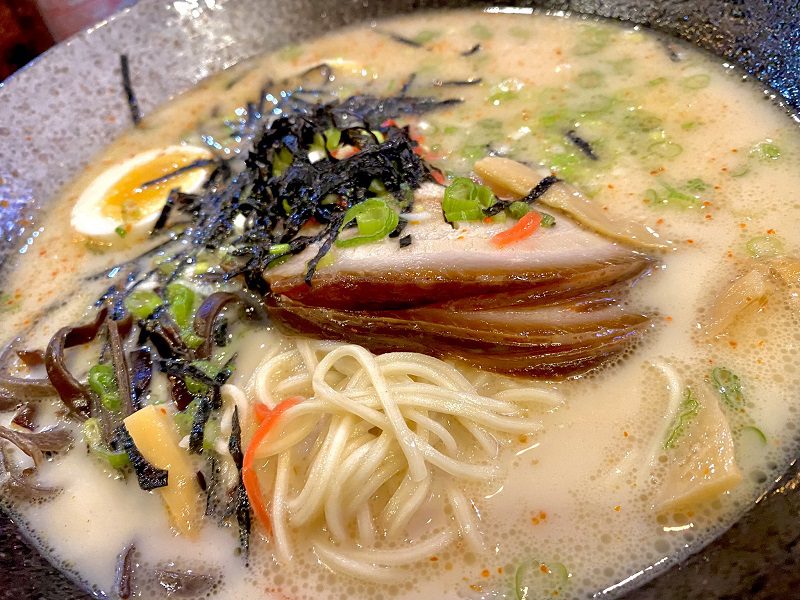
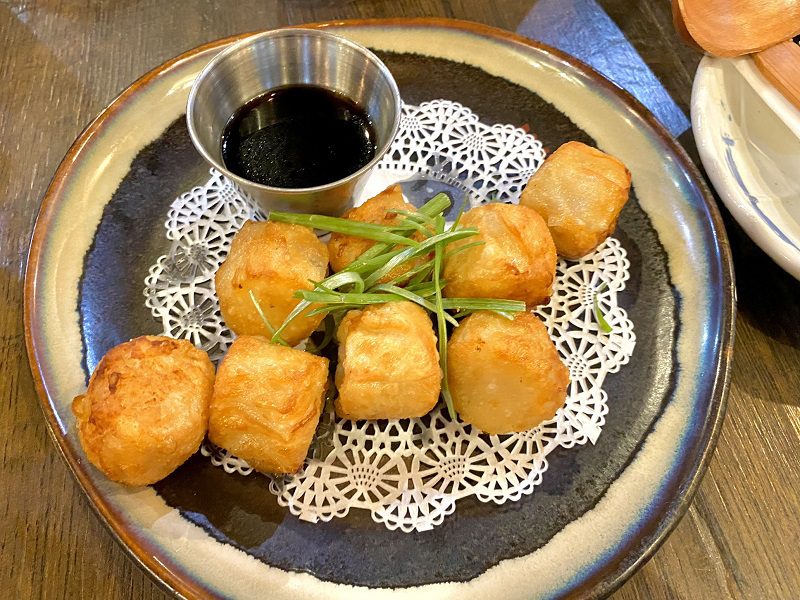
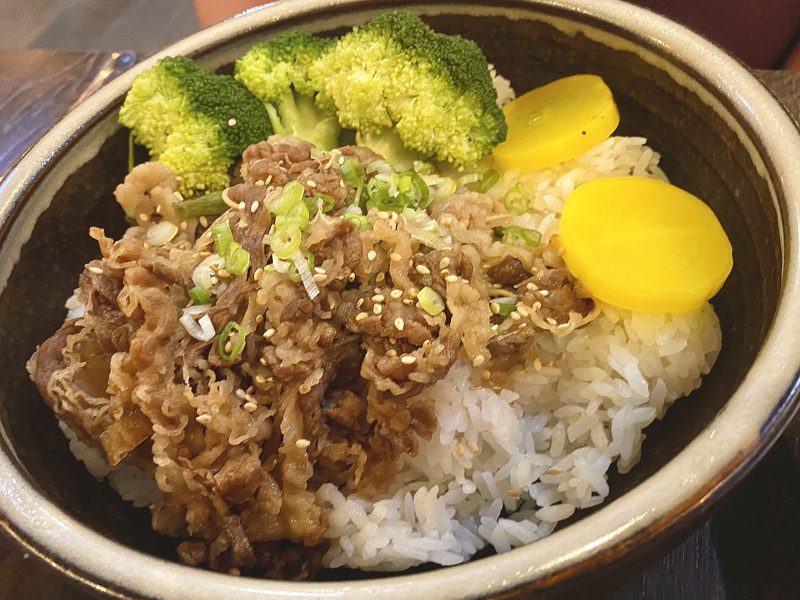
Stone Bowl Pan Asian
Stone Bowl is probably the friendliest place on Manatee Ave. All you see is smiles from beginning to end. Aside from being friendly, the service is fast and the food is delicious. Stone Bowl also offers noodles in some different ways aside from soup.
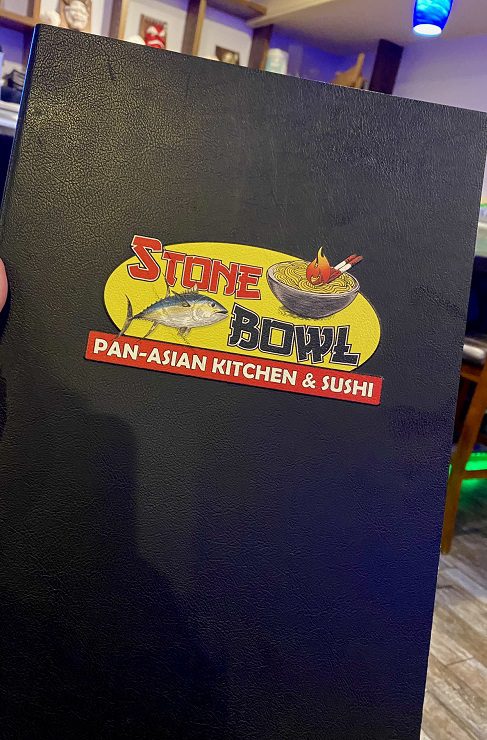
Yakisoba Noodles and Udon Noodles are stir-fried and don’t have a broth even though they’re very similar in ingredients and preparation. Yakisoba Noodles are wheat noodles and are pan-fried with celery, bell pepper, carrots, scallion, onion, bean sprouts, napa, cabbage and can be served with chicken, steak, tofu, shrimp, or vegetables.
Udon Noodles are also made with wheat flour and pan-fried with celery, carrots, scallion, onion, bean sprouts, napa cabbage & spinach. They can also be served with chicken, steak, tofu, shrimp, or vegetables.
Ramen and Szechuan Beef Ramen are both broth based. Stone Bowl’s Ramen is served with fish cake, boiled egg, scallion, bean sprout, spinach & seaweed. The Szechuan Beef Ramen has soy braised beef, scallion, bean sprout, fish cake, broiled egg spinach & seaweed.
Some of the meals that we’ve also enjoyed at Stone Bowl include a few of their rice bowls, which by the way, you can have with noodles instead. General Tso’s Chicken is available with white rice, brown rice or fried rice and vegetables.
Katsu Chicken or Pork is thinly pounded and crusted meat with panko crumbs and lightly fried, drizzled with katsu sauce. Katsu Sauce is made from malt vinegar, yeast, and vegetable and fruit purees, pastes, and extracts. The simplest way to explain katsu sauce is a mix of ketchup and Worcestershire sauce. It’s full of flavor and, in this case, had almost no heat. These dishes are large portions and will feed you once plus give you a good amount of leftovers.
Of course, I didn’t leave without trying Tempura Ice Cream at this restaurant. Yes, it was crispy and delicious as all treats should be. I’m pretty certain that this will become one of those places that we will visit often because it has such a varied menu that you can always find something that will suit your cravings.
Stone Bowl Pan Asian is located at 5516 Manatee Ave W in Bradenton. They’re open Monday- through Thursday from 11 am to 9:30 pm and Friday and Saturday from 11 am to 10 pm (Closed on Sunday).
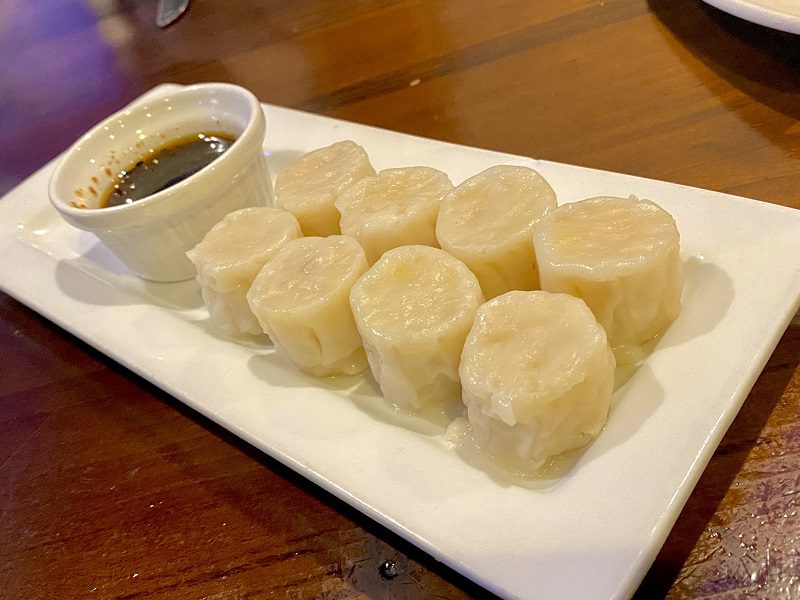
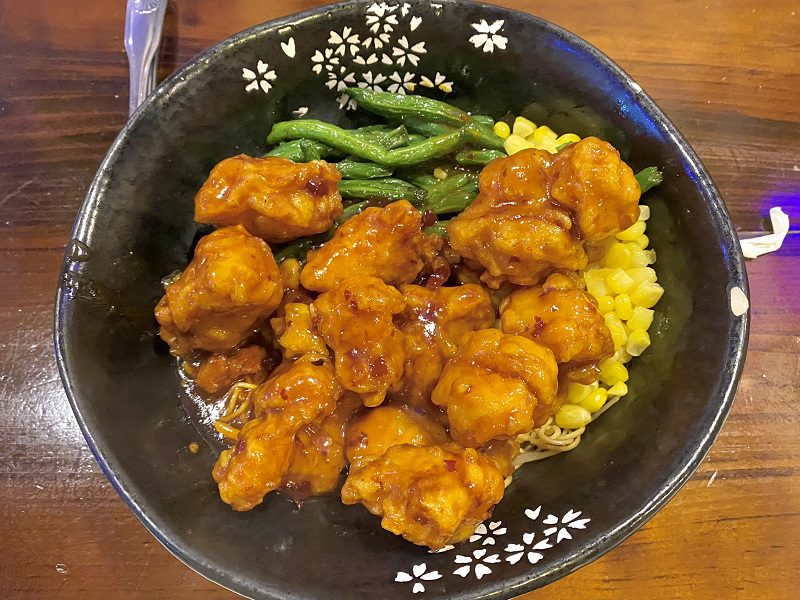
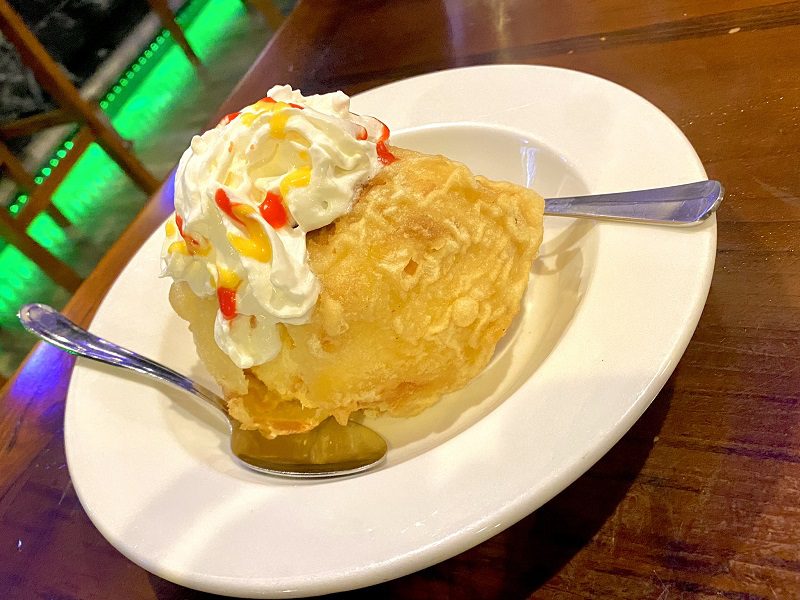
Impress Your Friends with These Fun Noodle Facts
Nothing says great dinner conversation like some interesting trivia. While you’re out exploring these delicious noodle houses, you can impress your friends by repeating these fun facts…
Asian noodles originated during the Han Dynasty around 206 BCE (Before Current Era) and were first recorded when large-scale wheat grinding was possible. The Chinese word for noodle is mian, mein, or mi and we continue to use some of those names today. Just around 300 BCE one of China’s wisest men at the time wrote a fu or rhapsody about the art of noodle making and memorialized the process for generations to follow. Noodles migrated from China to Japan, Korea, and Southeast Asia with increased travel between the regions. There’s even a tale that Marco Polo discovered noodles in Asia and brought them to Europe.
Asian noodles differ from each other due to the assortment of flours used. Most of China’s diet is wheat based and not rice even though we all believe the opposite is true. This is because the Yangtze River offers excellent conditions for growing wheat. There are many noodle varieties by region and we can find wheat flour; buckwheat flour; wheat flour with eggs; rice flour; mung bean flour (mung bean is a green legume also known as maash or monggo); potato starch flour; sweet potato flour; soybean flour; yam flour and even dried shrimp flour. Noodles can be dried, fresh, thin, thick, coarse, flat, round, and in sheets. Each country has its own techniques that make it unique yet follow similar basic methods.
Who knew there was so much to know about noodles?!




